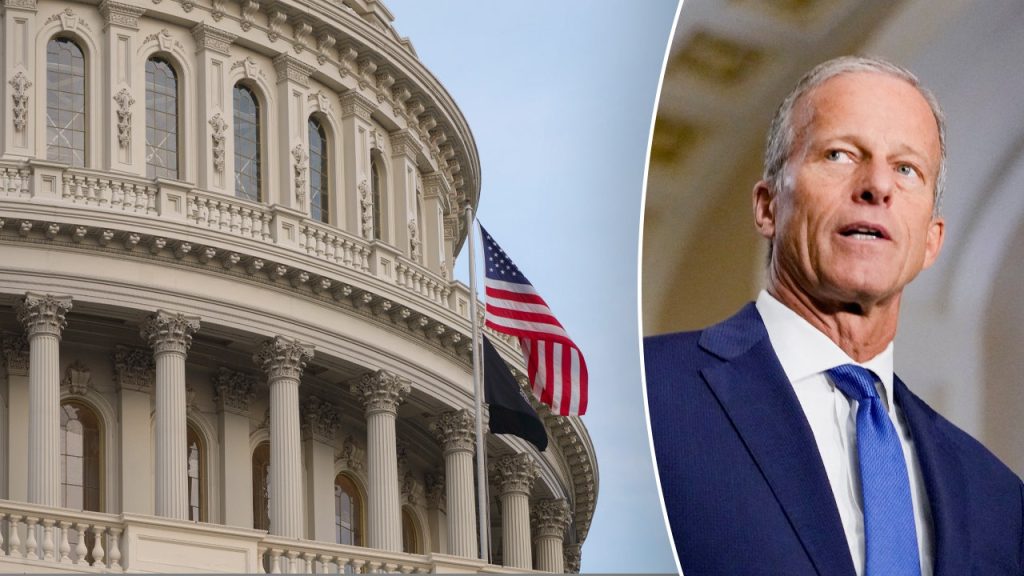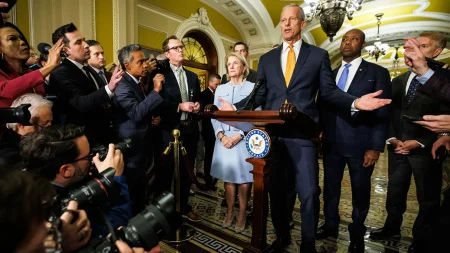Senate’s Evolving “Nuclear Option”: A New Chapter Under Majority Leader Thune
The U.S. Senate is on the brink of another significant procedural transformation, following in the footsteps of previous majority leaders who changed how the chamber handles nominations. Senate Majority Leader John Thune (R-S.D.) appears ready to execute what observers are calling a “suitcase nuke” version of the nuclear option – a parliamentary maneuver designed to expedite the confirmation process for dozens of lower-level nominees all at once. This development represents the latest chapter in the Senate’s gradual erosion of traditional filibuster powers, a process that began over a decade ago under Democratic leadership and has continued under Republican control.
The history of these procedural changes traces back to 2013, when then-Senate Majority Leader Harry Reid (D-Nev.) first deployed the “nuclear option” to overcome Republican resistance to President Obama’s executive branch nominees. Reid’s maneuver lowered the threshold for confirming most presidential appointments from 60 votes to a simple majority, though he maintained the higher standard for Supreme Court nominations. Four years later, Senate Republican Leader Mitch McConnell (R-Ky.) extended this precedent to Supreme Court confirmations, enabling Neil Gorsuch’s appointment to the high court with fewer than 60 votes. These changes fundamentally altered how the Senate handles presidential nominations, making it significantly easier for the majority party to push through contested appointments without bipartisan support.
Thune’s planned maneuver follows the same conceptual framework but applies it to a different procedural question: how to confirm multiple nominees simultaneously. The strategy hinges on a carefully orchestrated parliamentary sequence beginning with Thune introducing a resolution to approve approximately 40 nominees as a single package. While this resolution will predictably fail to achieve the currently required 60-vote threshold to overcome a filibuster, that failure sets the stage for Thune’s tactical move. By switching his own vote from yes to no at the last minute, Thune will position himself to demand a revote as a member of the prevailing side. This creates a unique parliamentary situation where debate is prohibited – effectively paralyzing Democratic opposition to what comes next.
The critical moment will arrive when Thune makes a point of order claiming that this type of nominee-bundling resolution should only require a simple majority rather than 60 votes. When the presiding officer inevitably rules against this novel interpretation (following established Senate precedent), Thune will call for a vote to overturn this ruling. If 51 senators vote to reject the chair’s decision – as Republican leadership clearly expects – the Senate will instantly establish a new precedent that dramatically streamlines the confirmation process for certain categories of nominees. This strategy specifically targets lower-level appointments, excluding both judicial nominees and cabinet secretaries, but nevertheless represents a significant procedural innovation in how the Senate processes presidential appointments.
The implications of this procedural change extend beyond merely accelerating the confirmation process for Trump administration nominees. Like previous iterations of the nuclear option, it further diminishes the Senate’s traditional emphasis on extended deliberation and supermajority consensus. While defenders argue these changes are necessary to overcome partisan obstruction and ensure the government can function with needed personnel, critics see them as further erosion of the Senate’s unique institutional character. Each deployment of these tactics makes it easier for future majorities to enact additional changes, potentially transforming the upper chamber into something more resembling the majority-rule House of Representatives.
If successful, Thune’s maneuver will establish a new fast-track for processing nominations, culminating in a single vote to confirm approximately 40 nominees on September 17. This efficient batch-processing approach would mark a significant departure from the Senate’s traditional nominee-by-nominee consideration process. While the immediate practical effect would be to help the Trump administration staff numerous positions more quickly, the longer-term consequence is another step in the ongoing transformation of Senate procedures. With each iteration of the nuclear option, the chamber moves further from its historical role as a deliberative counterweight to majority impulses and closer to a more streamlined, majority-dominated legislative body – a shift with profound implications for American governance regardless of which party holds power.














